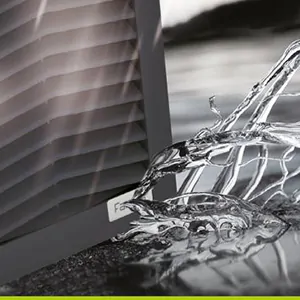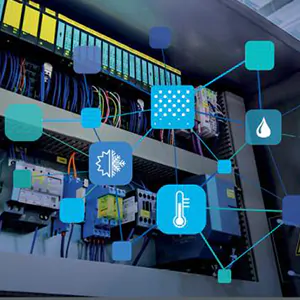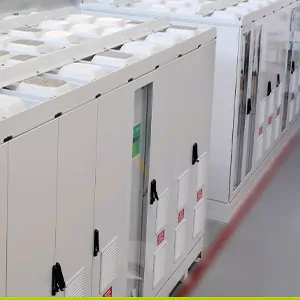Avoid Condensation in Enclosures
A guide to preventing condensation inside enclosures with the use of the correct heaters, thermostats and hygrostats.
Condensation Formation
Outdoor equipment is particularly prone to condensation given the change in temperature as daytime warmth turns to the cold of the night. Condensation may also form in indoor enclosures when humidity levels are too high and temperatures vary. It occurs when warm moist air comes into contact with cooler surfaces. Unless this is kept at bay then this can lead to mold, corrosion, mechanical damage, short circuits and in extreme cases, fire.
For example, a control cabinet where the internal air temperature is 27°C and the relative humidity is 75%. A drop in temperature to 22°C or below will start to form condensation within the enclosure.
How to Prevent Condensation
Firstly, ensuring your enclosure has an appropriate IP (ingress protection) rating is vital to prevent the ingress of water from outside the enclosure. Secondly, the key to prevent condensation forming inside the enclosure is to install a heater with a hygrostat or thermostat, outlined below.
H Series Heaters
The latest ranges of PTC (Positive Temperature Coefficient) H Series heaters from Fandis include a plastic range which is manufactured to be “touch safe”. H series heaters use cage clamp connection technology, this allows for the wiring of solid or fine-stranded cables without the use of tools for a quick installation. All products of the “H” series are also equipped with a 35mm DIN rail fixing clip made of a durable plastic coupled with a highly flexible steel staple, this allows the product to engage on the rail with ease. This solution also ensures a better seal at elevated temperatures. As this new range of plastic heaters are “touch safe” you can be assured of your own safety should accidental contact be made with the outer casing.
Certain models within the range incorporate a fan which helps provide a more even thermal distribution within the cabinet. Furthermore, this type of unit is very well suited to outside applications where cooler zones are more probable. The fans are long life axial fans which complement the long service life of the heaters.
Axair offer a broad range of heaters from as low as 5 to 350 watts, all are PTC heaters. PTC heaters vary from conventional heaters in that they contain a thermistor which provides a very efficient conversion of electrical energy to thermal. With a PTC heater the power consumption automatically decreases as the core temperature rises. This not only prevents overheating but helps ensure a long service life.
Hygrostats & Thermostats
Installing a hygrostat provides the perfect partner for the H series heaters or any of the current range from Fandis. It works by turning the heater on or off depending on a preset level of relative humidity. The IGR35F model is also a changeover unit; this means that it can control both a heater and fan to fully ensure thermal stability within the cabinet. Alternatively, the simplest and most economical method is to use a normally closed thermostat to control the heater which is then set at a temperature appropriate to the conditions and equipment specifications.
An appropriate heater and controller are an inexpensive investment when judged against the cost of the equipment they protect. See our full thermal management range including filter fans, heaters, thermostats and adaptors.


